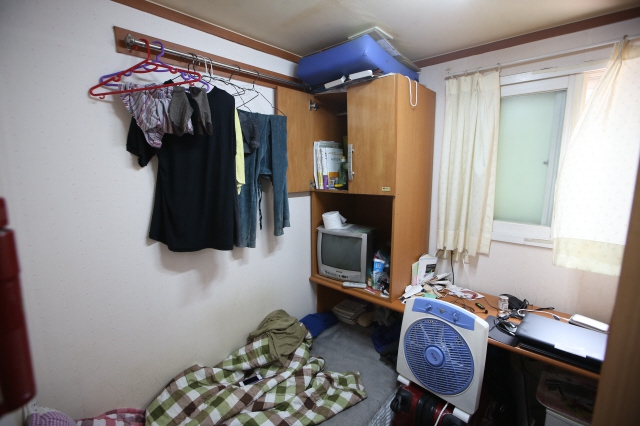More people in Seoul living in “residentially vulnerable” conditions (hankyoreh)
#Social_determinant_of_health #Housing #Seoul #vulnerable_accomodation_rising #youth_and_eldery #inequality
While more people being pushed into residentially vulnerable conditions, it is known that people living in these “miscellaneous” accommodations experience higher unmet medical need which leads to lower quality of life and subjective status, and also more prevalence of suicide.
 |
|
A gosiwon (a small room in a cramped boarding house)
|
Report finds that housing situation in the capital is particularly poor for youth and the elderly
Last year, more than 70,000 households in Seoul fell into the category of the “residentially vulnerable,” which means they are living in cramped boarding houses called “gosiwon,” public bathhouses, or on the streets, new government figures show.
Figures from a census by Statistics Korea released on Sept. 10 show that 209,486 households were living in non-traditional housing last year, out of a total of 3,784,705 households living in Seoul. Non-traditional housing includes office-apartment combinations called “officetels” (129,152 households), hospitality establishments including hotels and motels (2,219), dormitories and other special social facilities (3,999) and shacks and greenhouses (1,976).
According to the census, 72,140 of the households living in non-traditional housing were staying in “miscellaneous” accommodations. Most of these people are moving between gosiwon and public bathhouses or are staying in their self-owned restaurants. The number of households whose accommodations were classified as “miscellaneous” was recorded as 69,870 in the 2015 population survey, representing an increase of 2,270 households over the past year.
The percentage of residentially vulnerable households actually increased from the previous year. The total number of households living in Seoul last year grew by just over 200 from the previous year (3,784,490), which means that the increase in the number of the residentially vulnerable was relatively large. The number of Seoul households living in traditional housing (a category including houses and apartments) last year was 3,575,219, which was actually down from the year before (3,590,265).The increase in the number of residentially vulnerable households living in Seoul last year appears to have been due to population aging and to the rise in the number of people living alone. The largest age group among households in the miscellaneous category was 15 to 19 years old (35.7%), followed by 20 to 24 years old (16.7%) and 60 to 64 years old (11.4%). This implies that the housing environment is particularly poor for the youth and the elderly.
Another factor responsible for the increasing number of households in miscellaneous housing is the fact that the economic downturn has created more small business owners. Business owners who live in their workplace without having a house of their own are also included in the “miscellaneous” category.
“The statistics for the miscellaneous housing category can’t be subdivided any further, but our understanding is that a considerable number of these households are small business owners who live in their place of business,” said an official from Statistics Korea.
By Noh Hyun-woong, staff reporter
original article from: http://english.hani.co.kr/arti/english_edition/e_national/810532.html
